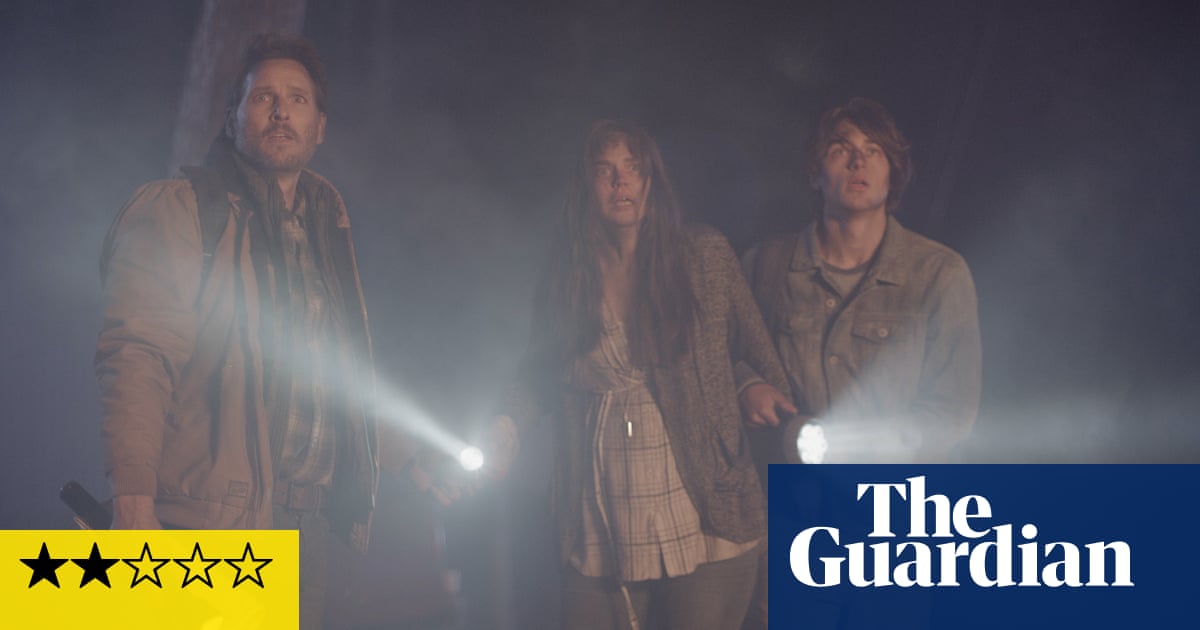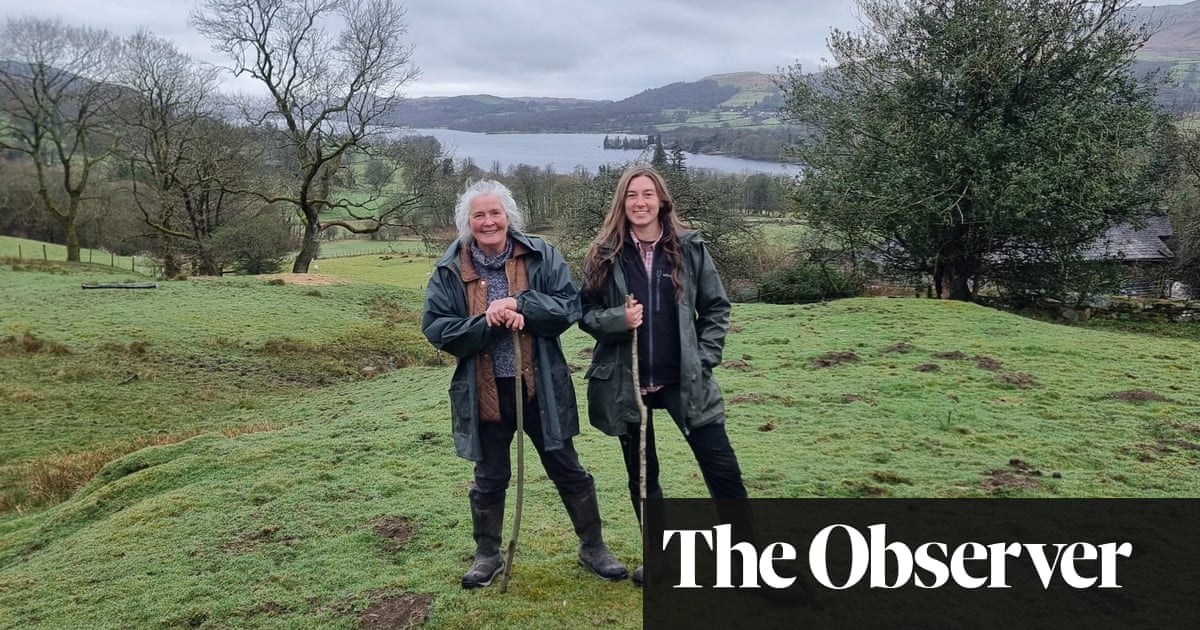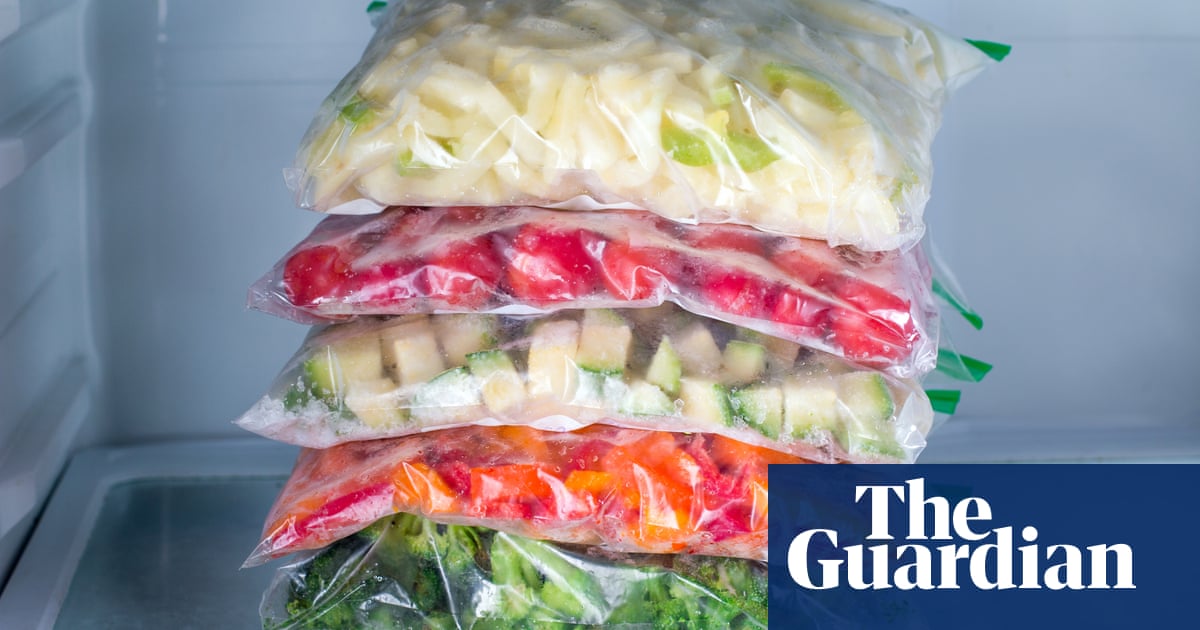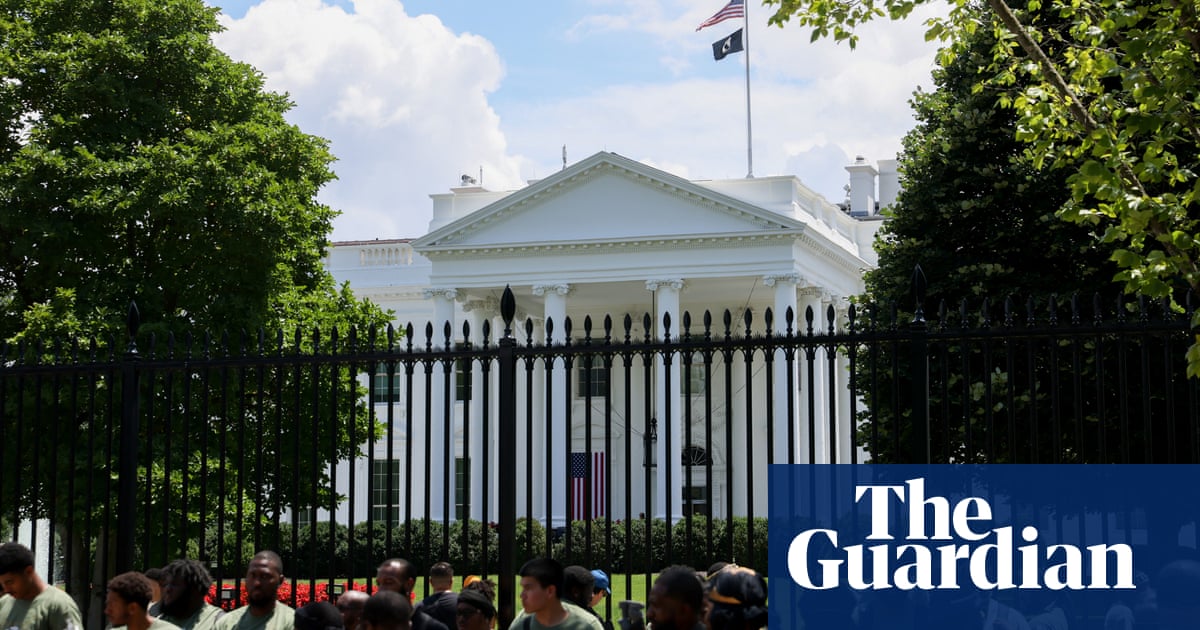
The word “disaster” is formed from the Latin dis and astro, meaning bad star. It refers to an ancient belief that when the stars are in a poor position, unfortunate events are going to occur. A misaligning of the astronomical bodies sends the world off kilter. On an individual level, a disaster might be losing our job, our relationship or just our house keys. But an official disaster – a “major incident” as English planners are now told to call it – is something on quite a different scale. Something that most of us don’t expect or anticipate. Most of us don’t think about disasters until they are on the news, after they have already happened.
But I cannot imagine living my life like that. I have always found myself analysing what might happen and why. Since I was a child, I have tried to be the first to know about the perils all around and ahead of us, aware of the sliver of difference between near miss and tragedy.
Maybe it goes back to my birth. In the winter of 1978, my mum visited a locum GP with the symptoms of a urinary tract infection. She remembers him being dismissive and uninterested as he lazily prescribed an antibiotic, which she dutifully took. It was contraindicated in pregnancy.
It caused a placental abruption and a premature labour began. She was rushed to hospital. Soon after, I was delivered by emergency caesarean section, via a rushed vertical incision. My mum was transfused for several hours and was close to death for a week. It was an early experience for my family of how wrong things can go in no time at all. A lesson in the severe consequences of events that are preventable. Perhaps it’s just the bias of hindsight, but some of my earliest memories are of being aware of risks in a different way to other people, feeling them as tangible and imminent. In my family, the story is that I was born that way.
I am a child of the indomitable city of Liverpool, where tragedy and activism is wired into the blood. I passed by my first disaster scene when I was eight years old. My parents were teachers who spent swathes of their career in secondary schools in the deprived inner-city areas of Toxteth, Walton and Tuebrook. In March 1987, my mum had arranged a school trip to visit West Germany and we all went along for the ride. My parents, my five-year-old little sister and I were all sailing on the sister ferry of the ill-fated Herald of Free Enterprise. As we approached the place in the Channel where 155 passengers and 38 crew members
had lost their lives and hundreds of others had scrambled out into the waters, we stood on the decks in silence.
Herald of Free Enterprise had capsized two weeks earlier, on 6 March 1987, outside the harbour of Zeebrugge. It was still there, on its side and partially submerged, as we passed by. My strongest memory is the lights around the ferry, shining through the sea fog, attached to the tugs and rescue vessels and a floating crane. My parents recall me becoming more and more agitated as I queried over and over again that for the people inside, as the boat rolled over, the stairs would be in the wrong place. “How would they know which way was up?” I asked. As I watched, I knew that there were still people inside the wreck, I could feel it deep inside me. How would they get them out?
Twenty-eight years later, I am on my way to a very different disaster scene, no longer an onlooker, but here to size up the scale of what is to be faced and what can be done about it.
It is raining hard. Water trails down the windscreen and the wipers squeal with effort. I don’t drive, so I’ve earned a reputation for getting as close to the cordon tape as possible in a taxi. I have grown to trust just one driver, Jay. He has taken me to locations all around the country and sometimes to airports or train stations in the middle of the night.
I have honed my rituals over a decade. I play Eminem and Kanye on my iPod. I use the beat to get up the necessary resolve for what is about to come and to separate the world I’ve left from the one I’m about to enter. Sometimes I fall asleep and Jay turns up the radio to drown out my snoring. I know he will give me a 10-minute warning when he thinks we are close. He can’t always be sure that we are there yet because there are no signposts to a new disaster. There will be small cues though: a police car and the van of a tactical support unit. A welfare truck supplied by the fire service. A fleet of private ambulances.
Eventually, we pull up at a kerb and I get out of the back with my rucksack and wheelie bag, feeling like a chubby air hostess. I pull up my coat hood, cursing. I know the rain will threaten the forensic integrity of the scene, as it forms a soup with the mud and the paraffin and the blood. I gather my breath and breathe in, deep from the diaphragm, like the psychologist who tended to the fire crews at the 1995 Oklahoma City bombings taught me. Then, I look for the doorway to hell.
I’m always struck by how fine the line between catastrophe and the rest of the world can be. Here, it is mere metres. Motorway traffic roars close enough to lift the hair on my fringe. One of the very first items on an emergency responder checklist is the securing of the scene, so a fence is up and already fraying.
The fences can’t keep out the newest way to sneak a look, however, and despite the weather there is a constant buzz of drones owned by news organisations. I nod at the security guard, his mouth set to mute, bomber jacket, angry stubble. He has been told to expect me, but I am not what he pictured. I am a short woman, rounded by years of trying (and failing) to make babies. Arthritis has hobbled my gait to give me a rolling walk. I smile broadly at him. You learn early on that you can’t show fear or weakness. The cards are stacked against you already for not being police or forensics. And for being a woman. So, you perfect your swagger. I sign the log. I breathe in again. I am in.
A small plane has crashed into the road, ploughing into a series of cars and spectators. A crane is being readied to lift twisted sheets of plane wing. I know that at least 11 people have died and several more are injured. I am looking at a landscape where bent metal has fused with herbage, body parts and shoes, over several miles. The aftermath of an air crash can defy the physics of how people should fit together and also mess with the rules of topography in the area where they land. Aircraft pilots are trained to try to aim their failing planes at scrubland or an empty park, so before the world lands on them these are often the most mundane of places.
Last week, this was just a verge of knotted thistles and thorns, a decade of Evian bottles and Walkers crisps wrappers sewn into the scrubland, with a series of broken registration plates marking the scenes of historic fender benders. Now, it is a Bosch’s Garden of Earthly Delights for the modern time. Paramedics’ detritus marks out the location of attempts to attend to the sole survivor, who is now fighting for his life in the local hospital. Wads of cloth, gauze and tubing float on the surface of a large puddle. I notice a Thermos flask and the twisted limbs of a camping chair strewn nearby. Objects, dents and marks all put on their own little mystery play.
The violence that has occurred here is breathtaking. Kinetic forces acting on an aircraft are brutal to flesh and bone. I never shy away from what I see. My coping mechanism has been to unpick what I am looking at; I move my head from side to side to try to decipher what was a personal item from someone’s pocket and what was plane upholstery or metalwork, both now embedding in the soft, human frame.
Police and local responders might only see a major incident like this once in their career, but I have seen them over and over again: nuclear incidents, chemical attacks, pandemics, food shortages, fuel shortages, train and plane crashes, volcanoes and tsunamis. Companies, governments, countries all have to be prepared for catastrophe. Few people know about us but disaster specialists like me can be found all over the place, if you know where to look – town halls, fire and rescue and police services, NHS trusts, universities, airlines and cruise companies. We are a Cinderella service, sweeping up below stairs. Some of us are independent contractors; others work for private disaster-management companies. Collectively, we are a giant Elastoplast for when the worst happens.
The initial adrenaline rush of the emergency is over quickly, but disaster recovery is the long game. Then, somewhat perversely, I use everything I’ve learned to get us better prepared for the next disaster. That part of my profession is called emergency planning. I write what are known as emergency plans for the government as well as for all sorts of organisations. We write them before an incident happens and then test them until they are needed. You might think I’d lose count, but I don’t because each disaster is seared into my brain and has nudged and shaped every aspect of my life and my very self. The Indian Ocean tsunami, 9/11, the Bali bombings, London’s 7/7 attacks, Grenfell Tower…
There are some where only a few really understand how close we came to global carnage: the Japanese tsunami and concurrent nuclear disaster of 2011. And there are the “quieter” ones. The poisoning of former Russian agents in London and then, a decade later, Salisbury. The carefully planned raids on factories full of trafficked enslaved people, the floods, the shootings, the fires. And then, of course, the latest: the global Covid-19 pandemic, which, contrary to some myths, was the most diligently planned-for risk in British history.
The poet WH Auden wrote in 1938 about how, in one part of a place, a tragedy of the most unimaginable horror can be unfolding while in another part of the same panorama, a farmer can continue to plough his field, someone else is eating “or just walking dully along”. Life simply goes on all around the suffering.
I have made my life around walking towards the unfolding disaster and I am by no means the only one: we are a whole profession dedicated to cleaning up after the worst has happened. We perform an important service, but also a hidden one. The toughest part is “demobbing”, trying to fit back into your family roles again. Refocusing your brain on small talk and a grocery list. Steadying your nerves when you reach for a household object – a toothbrush, a pen – the brand that you’ve seen in the wreckage.
I know I will find it impossible to tell the man I love what I have seen. The words stopped forming on my palate a long time ago. The hardest part of working in a disaster is going home. But something about the notion of them and us has shifted since the pandemic. Life doesn’t simply carry on around the suffering as it once did. It is universal, less hidden; we are all disaster survivors now. We will feel the effects of Covid-19 for many years to come.
The government’s response to the Covid-19 pandemic has included hefty doses of fear in the messaging. People are afraid – of the virus but worse, of each other. The place that we find ourselves is spectrum-opposite from that on which a healthy recovery is built. Historically, as a pandemic wanes, the pogroms and the rioting begin. Whether we follow that path is up to us. We have never been on more of a knife-edge than we are now; fear is a dark genie that is not easy to put back into its bottle. Its effects will linger long after things feel more under control. I had often wondered about how people kept going in long and chronic events such as the Blitz of the Second World War and now I realise that it was only afterwards that this period was framed neatly and bookended with a beginning and an end. At the time, you just kept putting one foot in front of the other, each time that dawn broke.
As I prepare to publish my book, a newly terrifying disaster is unfolding in Ukraine. Once again my phone is ringing through the day and into the night as humanitarian colleagues try to make sense of what is going on all around them. Whatever happens over the next days, months and weeks, one thing is clear: this is a disaster on a scale not seen in Europe for many decades. As soon as possible, the lessons we’ve learned from disaster recovery elsewhere must be put into practice, swiftly and effectively and, most importantly, in the best way possible to help the people most affected.
There is some debate about whether a disaster is the initial “big bang” or the years that follow. Life after disaster is perpetual, chronic, with a pain that ebbs and flows like tides. Errors made in the response can change the course of the recovery and undermine the longer-term psycho-social health of whole communities. I thought I knew what trauma was and what causes it. But in the course of my work, I have discovered a new enduring loss brought about by the loss of everything – something the people of Ukraine now face.
My soul hopes for the best – and has an expansive frame of reference to draw on to feel hopeful. It is both my nature and my life’s work to believe we can clear out of the thickets of disaster and then begin the labour of healing. My professional experience has taught me the value of a horizon to swim towards. The importance of trying to build something afterwards. But to stay living, breathing, there has to be a purpose, a future, a bluer sky. It has also taught me that there are many bumps ahead and that we have to be painfully honest about those. All the planners can do now is be the light-bearers, illuminating the traps and helping as many as they can to navigate the next steps.
Those of us who work in disaster will never stop scanning the stars to see what they have in store for us next. Or finding ways to help people put their lives back together in the aftermath.












